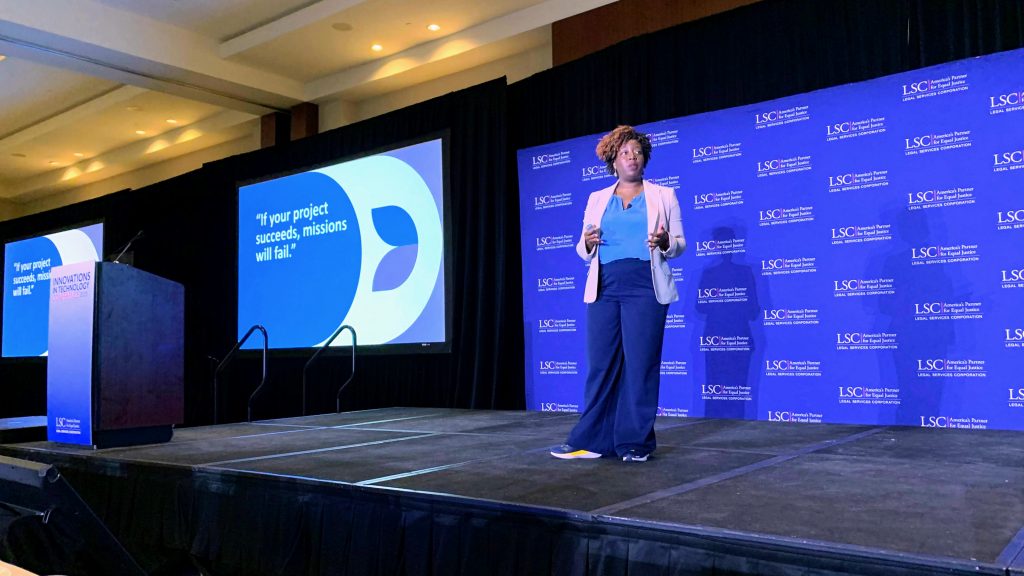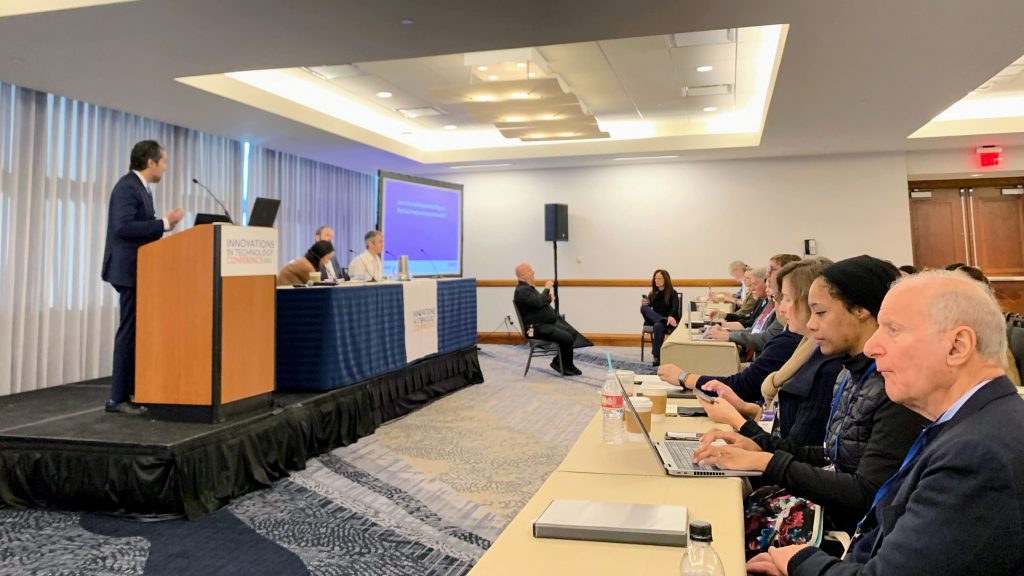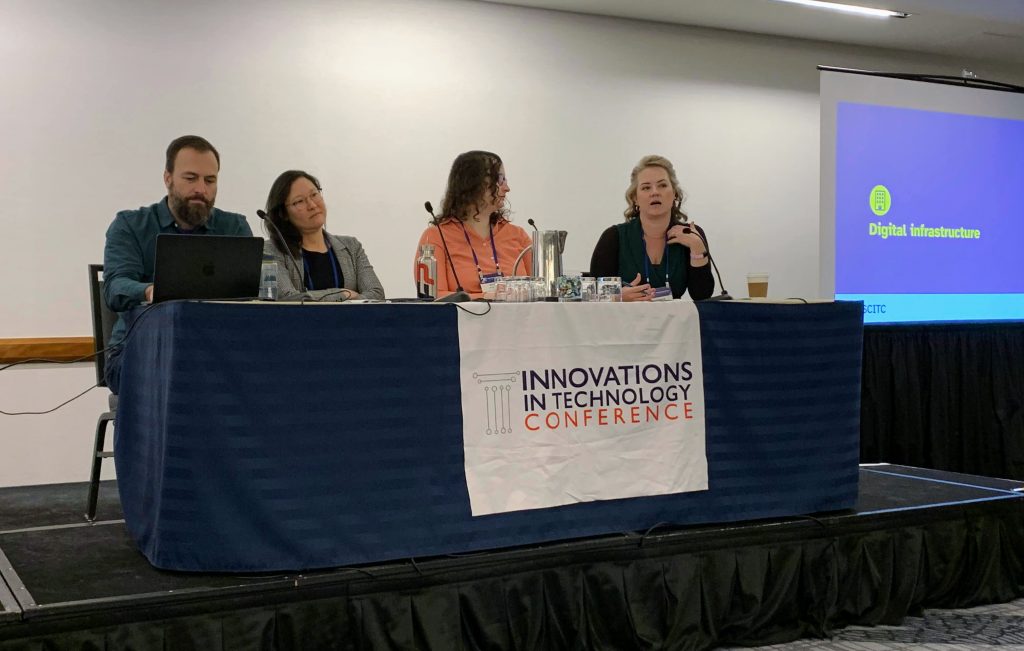
At the LSC’s Innovations In Tech Conference, the Justice Gap Persists in Legal Tech, But Scrappy Innovators Drive Change Nonetheless
One of my most-read stories last year was The Justice Gap in Legal Tech: A Tale of Two Conferences and the Implications for A2J. It was about the jarring juxtaposition I experienced of traveling from Legalweek in New York, that glitzy celebration of big law tech, directly to the Legal Services Corporation’s Innovations in Technology Conference, an annual event devoted to tech for legal aid organizations and access to justice.
As I wrote at the time, I was both struck and troubled by the chasm between these two worlds and what it meant for serving the legal needs of all. While we speak often of the justice gap in this country, the juxtaposition between these two conferences underscored that there is another gap underlying the justice gap – the funding gap between those who are developing legal technology to better meet the legal needs of low-income Americans and those who are developing legal tech to serve large law firms and corporate legal departments.
As I wrote last year: “However you figure it, the conclusion is unavoidable that the vast majority of funding in legal tech is going to products that serve the legal needs of only a small minority, while tech devoted to serving the vast majority of legal needs receives only a miniscule portion of that money.”
I am thinking about this because I have just returned from this year’s Innovations in Technology Conference. It was a notable one, because it marked the conference’s 25th anniversary, and came on the heels of the retirement in November of Glenn Rawdon (the person you see pictured above), who, as LSC’s program counsel for technology, first conceived of the conference and oversaw it all these years.
(See also my report on the inaugural AI for Legal Aid Summit, which was adjacent to the ITC conference.)
Because Legalweek moved to later in the year (March 24-27), I experienced no jarring juxtaposition this time around of jumping from one to the other, but it was equally clear that little has changed in terms of availability of funding for the legal services sector.

The conference’s keynote speaker, Afua Bruce, principal of ANB Advisory Group, provided a framework for technology adoption, reminding the audience that tech can be a powerful tool, but only if it is adopted.
According to Law360, legal tech companies raised about $4.98 billion in funding in 2024. The vast majority of that money went to companies that are developing products to serve larger law firms and corporate legal departments.
By contrast, and to repeat what I wrote last year because it has not changed, the principal source of funding for technology development in the legal services sector is the LSC’s Technology Initiative Grants program. In 2024, as it was in 2023, the total available funding for TIG was $5 million, and most of the individual grants given out under the program were less than $40,000.
To repeat myself one more time: Imagine if just a fraction of the billions being spent on big law tech could somehow be diverted to A2J tech? Imagine the impact it could have on narrowing the justice gap in this country?
Unfortunately, from last year to this year, there has been little change, and I suspect the same will be true when I return to ITC next year.
Scrappy and Agile Innovators
But lest I leave you with the impression of a legal services sector struggling to innovate, let me set the record straight.
The fact of the matter is that, what the legal services sector lacks in funding, it makes up for in scrappiness and agility. While there may not be big tech companies pouring R&D dollars into building tools for legal services, there is plenty of building going on, with much of it is being done by the organizations themselves.

A panel on gen AI for self-represented litigants featured Sateesh Nori, senior legal innovation strategist at Just-Tech; Sandra Sandoval, senior product manager at Justicia Lab; Conor Malloy, director of innovation at CARPLS; and Jonathan Petts, CEO of Upsolve. Listening on the far right is John Levi, chairman of LSC’s board of directors.
I googled the meaning of scrappy in the context of innovation, and its AI overview gave me this definition:
“‘Scrappy’ in the context of innovation means being resourceful, agile, and determined to achieve results with limited resources, often by thinking creatively and taking risks to overcome obstacles, essentially getting things done quickly and efficiently even when facing constraints.”
That, to a T, describes what I witnessed at ITC. Where last year’s conference was characterized by lots of conjecturing about what could be done with the emerging technology of generative AI, this year’s conference was characterized by lots of showing and telling of tools that organizations have now built and put into use.
In my post earlier today on the AI for Legal Aid Summit that preceded ITC by a day, I listed some of those tools, many of which were also demonstrated during sessions at ITC. They include:
- LIA, a legal information assistant developed by Legal Aid of North Carolina.
- Rentervention, a legal tool for tenants developed by the Law Center for Better Housing in Chicago.
- Roxanne, a tool for NYC tenants to understand their repair rights developed by the nonprofit Housing Court Answers in partnership with New York University School of Law and the legal automation company Josef (the launch of which I covered last week).
- DACA CoPilot, developed by Microsoft to help with DACA renewals.
- Michael Semanchik, executive director at The Innocence Center, showing how he uses CoCounsel to streamline his work in reviewing innocence cases.
- A chat tool to help with expungement of criminal records developed by the Legal Aid Society of Middle Tennessee and the Cumberlands.
Two other tools I saw demonstrated at ITC were:
- Vanessa, an AI tool developed by Upsolve to answer people’s questions about bankruptcy.
- iMMPATH, a multilingual immigration assistant for asylum seekers and new arrivals developed by Justicia Lab.
In several of these examples, the legal services organizations conceived, built and implemented the tools on their own. They are moving forward on their own, sometimes with the help of a TIG or other grant, sometimes not, to develop tools to streamline the work of their professionals, to reduce the load on their professionals, and to help self-represented litigants better understand their rights and options.
Progress On Innovation
So even though big VC money is not flowing into this sector, legal services organizations are not letting that hold them back.
Last year at ITC, I interviewed Scheree Gilchrist and Ashley Campbell from Legal Aid of North Carolina for my LawNext podcast. At the time LANC was the first legal services program in the country to launch an innovation lab, spearheaded by Campbell, its executive director, and led by Gilchrist, whom Campbell had appointed as chief innovation officer.

A program on e-filing and guided interviews for self-represented litigants featured Sam Glover of the Suffolk LIT Lab, Sarah Song from the Illinois courts, Vivian McNaughton from Illinois Legal Aid Online, and Jessica Frank from the Free Law Project.
A year ago, having someone in the role of innovation officer at a legal services organization was an anomaly. This year, I saw several people with innovation roles in legal services organizations. And even at organizations where no one has that title, it seems, there is someone who is working on innovation and AI.
And the LSC, just as it has with its TIG program, will be there to help. At ITC, Ronald Flagg, LSC’s president, announced that, later this year, LSC will launch its own AI learning lab to help foster the development of AI tools for legal aid.
Ten years ago, the LSC put out a report saying that the access to justice gap would be bridged only through the use of technology. “Technology can and must play a vital role in transforming service delivery so that all poor people in the United States with an essential civil legal need obtain some form of effective assistance,” the report concluded.
LSC has been working on an update to that report, which it will publish later this year. I have not seen it, but I have no doubt that bottom-line conclusion will hold fast.
The LSC’s ITC is a reminder of how critical technology is to solving the justice gap. And it is also a reminder that, even in the face of a legal tech funding gap, legal services providers throughout the country are innovating every day, often in scrappy and agile ways.
Postscript: I would be remiss in this piece if I did not acknowledge the fact that there are major legal tech companies that make their products available to the legal services sector either for free or at greatly reduced cost.
One of them, Everlaw, was an exhibitor at ITC, sharing information on its Everlaw for Good program, which I recently featured in an episode of my LawNext podcast. Another, Relativity, was in attendance talking about its Justice for Change program.
I plan to publish a list of legal tech companies that offer their products for free to nonprofits or A2J organizations. In the next week or so, I will post a survey that companies can fill out. In the meantime, if you are a company that has a “for good” program, please let me know.
Leave a Comment